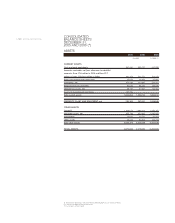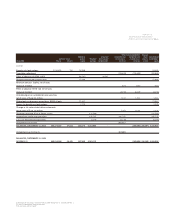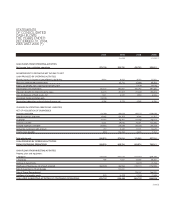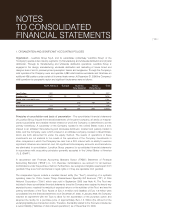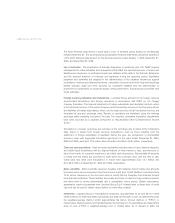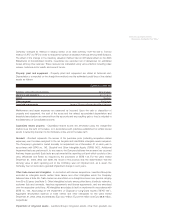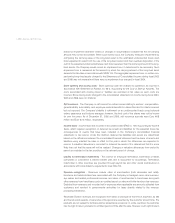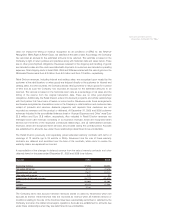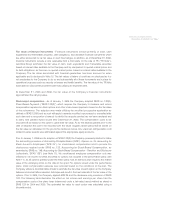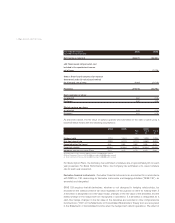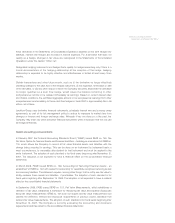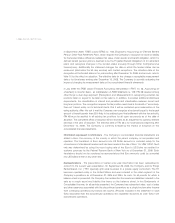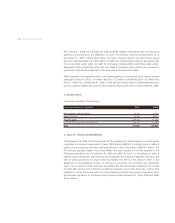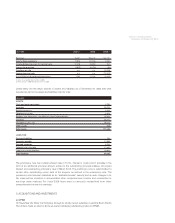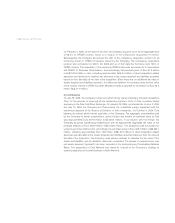LensCrafters 2006 Annual Report Download - page 112
Download and view the complete annual report
Please find page 112 of the 2006 LensCrafters annual report below. You can navigate through the pages in the report by either clicking on the pages listed below, or by using the keyword search tool below to find specific information within the annual report.>112 | ANNUAL REPORT 2006
tested for impairment whenever events or changes in circumstances indicate that the net carrying
amount may not be recoverable. When such events occur, the Company measures impairment by
comparing the carrying value of the long-lived asset to the estimated undiscounted future cash
flows expected to result from the use of the long-lived assets and their eventual disposition. If the
sum of the expected undiscounted future cash flows were less than the carrying amount of the long-
lived assets, the Company would record an impairment loss, if determined to be necessary. Such
impairment loss is measured as the amount by which the carrying amount of the long-lived asset
exceeds the fair value in accordance with SFAS 144. The aggregate impairment loss on certain non-
performing long-lived assets charged to the Statements of Consolidated Income during fiscal 2005
and 2006 was not material and there was no impairment loss charged in fiscal 2004.
Store opening and closing costs -Store opening costs are charged to operations as incurred in
accordance with Statement of Position no. 98-5, Accounting for the Cost of Start-up Activities.The
costs associated with closing stores or facilities are recorded at fair value as such costs are
incurred. Store closing costs charged to the consolidated statements of income during fiscal 2004,
2005 and 2006 were not material.
Self insurance -The Company is self insured for certain losses relating to workers’ compensation,
general liability,auto liability, and employee medical benefits for claims filed and for claims incurred
but not reported. The Company’s liability is estimated on an undiscounted basis using historical
claims experience and industry averages; however, the final cost of the claims may not be known
for over five years. As of December 31, 2005 and 2006, self insurance accruals were Euro 46.8
million and Euro 37.4 million, respectively.
Income taxes -Income taxes are recorded in accordance with SFAS no. 109, Accounting for Income
Taxes,which requires recognition of deferred tax assets and liabilities for the expected future tax
consequences of events that have been included in the Company's consolidated financial
statements or tax returns. Under this method, deferred tax liabilities and assets are determined
based on the difference between the consolidated financial statement and tax basis of assets and
liabilities using enacted tax rates in effect for the year in which the differences are expected to
reverse. A valuation allowance is recorded for deferred tax assets if it is determined that it is more
likely than not that the asset will not be realized. Changes in valuation allowances from period to
period are included in the tax provisions in the relevant period of change.
Liability for termination indemnities -The reserve for employee termination indemnities of Italian
companies is considered a defined benefit plan and is accounted for accordingly. Termination
indemnities in other countries are provided through payroll tax and other social contributions in
accordance with local statutory requirements (see Note 10).
Revenue recognition -Revenues include sales of merchandise (both wholesale and retail),
insurance and administrative fees associated with the Company’s managed vision care business,
eye exams and related professional services, and sales of merchandise to franchisees along with
other revenues from franchisees such as royalties based on sales and initial franchise fee revenues.
Excluded from revenues and recorded net in expenses when applicable are amounts collected from
customers and remitted to governmental authorities for taxes directly related to the revenue-
producing transaction.
Wholesale Division revenues are recognized from sales of products at the time of shipment, as title
and the risks and rewards of ownership of the goods are assumed by the customer at such time. The
products are not subject to formal customer acceptance provisions. In some countries, the customer
has the right to return products for a limited period of time after the sale. However, such right of return


